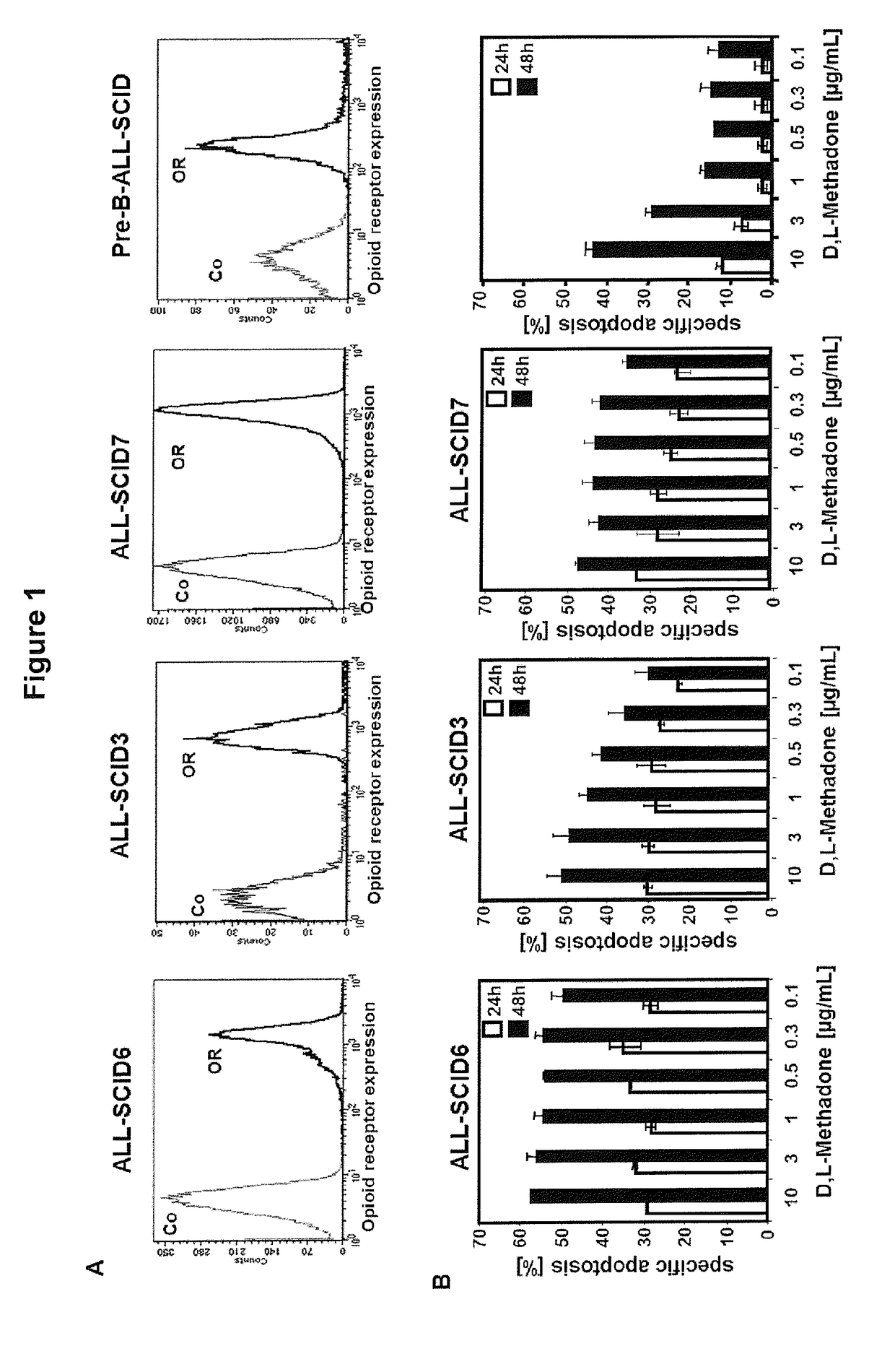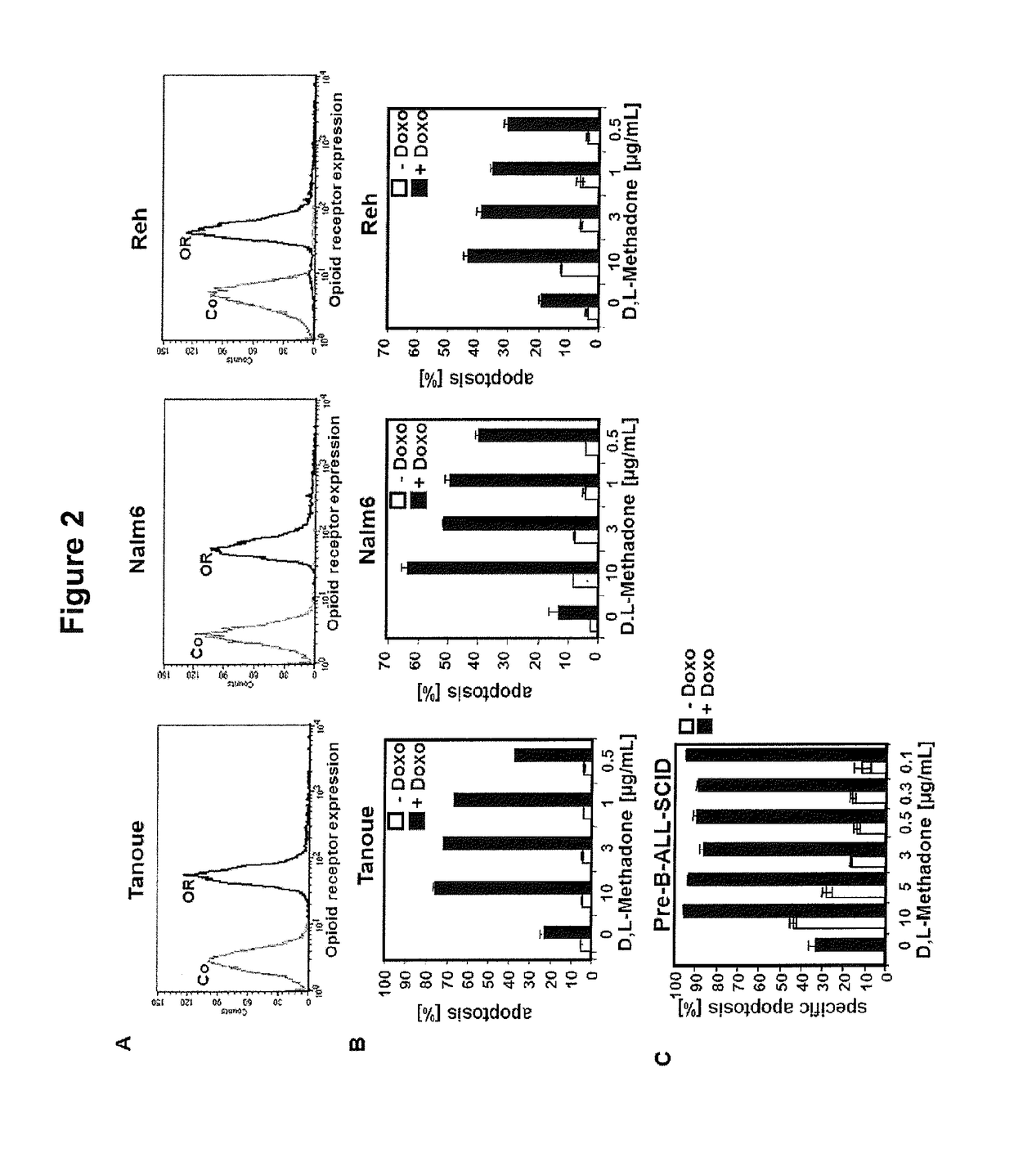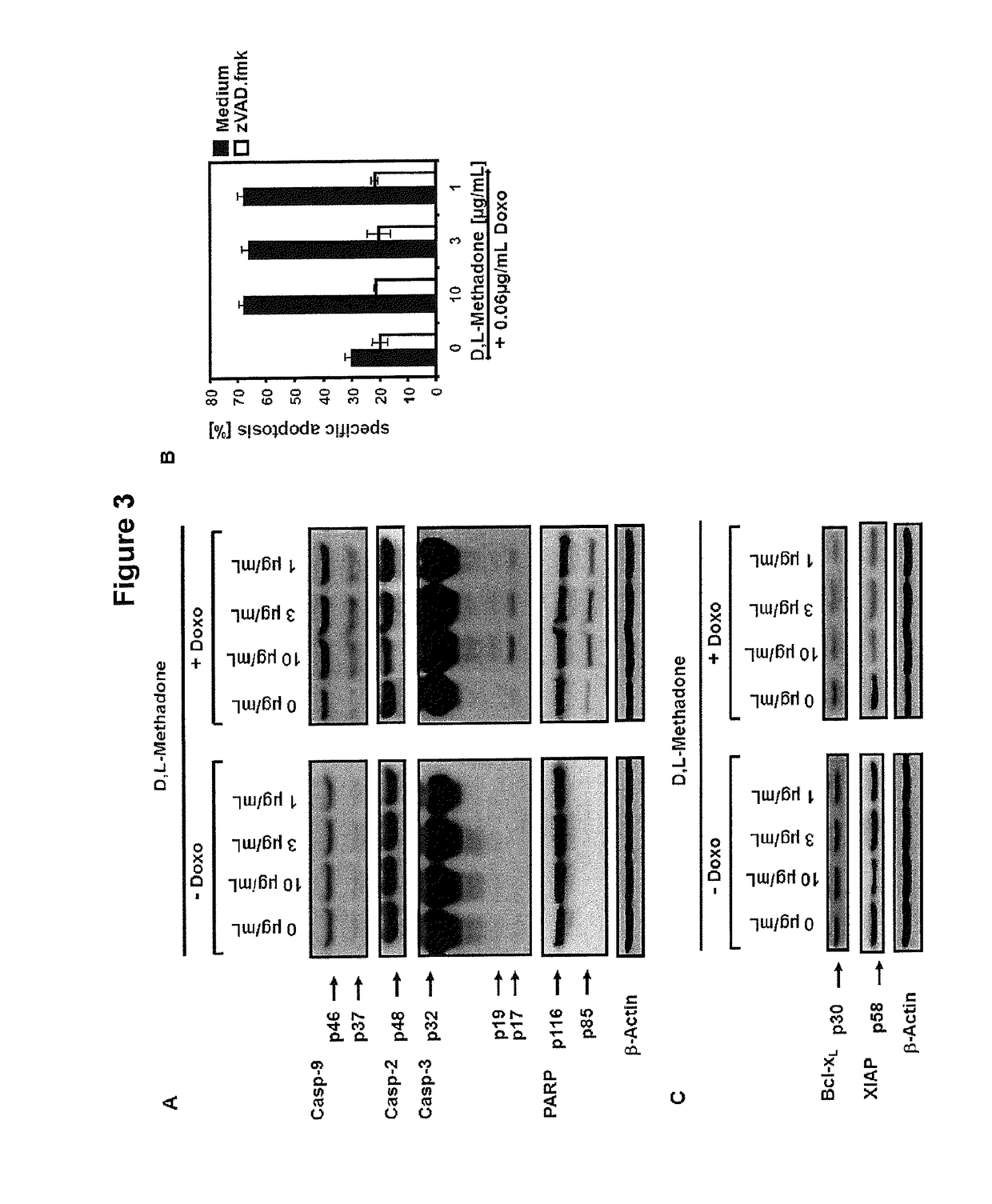Combination of opioids and anticancer drugs for cancer treatment
a cancer treatment and cancer technology, applied in the field of cancer treatment of opioids and anticancer drugs, can solve the problems of affecting the survival rate of patients, and affecting the normal functioning of tissues and organs, so as to increase the expression of opioid receptors, inhibit the efflux of doxorubicin, and enhance the uptake
- Summary
- Abstract
- Description
- Claims
- Application Information
AI Technical Summary
Benefits of technology
Problems solved by technology
Method used
Image
Examples
example 1
D,L-Methadone Induces Cell Death in Xenograft-Derived All-Cells Depending on Opioid Receptor Expression
[0180]To show the clinical relevance of D,L-methadone in treatment of leukemia and the role of opioid receptor triggering in cell death induction, the anti-cancer effect of D,L-methadone was analyzed in different xenograft-derived ALL-cells. The xenografts were originally established from patients with T-cell (ALL-SCID6, ALL-SCID3), B-cell (ALL-SCID7) (Borgmann et al., 2000) and B-cell precursor (BCP, pre-B-ALL-SCID) acute leukemia. At first, the opioid-receptor expression on xenograft-derived-ALL-cells was measured. It was observed that the ALL-SCID6, ALL-SCID3 and the ALL-SCID7 leukemia cells displayed opioid-receptors in high amounts (FIG. 1A), whereas the pre-B-ALL-SCID expressed only moderate levels of opioid-receptors (FIG. 1A).
[0181]To analyze if cell death induction using D,L-methadone depends on the levels of opioid receptor expression, ALL-SCID6, ALL-SCID3, ALL-SCID7 and ...
example 2
Combination Treatment with D,L-Methadone and Doxorubicin Kills and Activates Caspases in ALL-Cells with Moderate Opioid Receptor Expression
[0183]In analogous studies, the cytotoxic potential of D,L-methadone on BCP-ALL-cell lines (Tanoue, Reh, Nalm6) expressing opioid-receptors in a moderate level on their cell surface (FIG. 2A) was tested.
[0184]These BCP-ALL-cell lines could only be killed slightly by D,L-methadone (FIG. 2b) as observed for the pre-B-ALL-SCID (FIG. 1B). In order to show if different substances will act synergistically, the cell lines Tanoue, Reh, Nalm6 and pre-B-ALL-SCID were treated with different concentrations of D,L-methadone and doxorubicin alone or in combination with each other (FIG. 2B, 2C). It was observed that the combination treatment strongly induced cell kill in BCP-ALL-cell lines as well as in xenograft-derived-BCP-ALL-patient-cells (pre-B-ALL-SCID) (FIG. 2B,C).
[0185]In order to analyze the molecular pathways of cell killing in more detail and to find...
example 3
Doxorubicin Strongly Induces Opioid-Receptor Expression in Leukemia Cells
[0188]The efficiency of cell death induction and activation of effector molecules in apoptosis pathways after treating leukemia cells with D,L-methadone seems to depend on the amount of opioid-receptors displayed on the cell's surface. Combination treatment with D,L-methadone and doxorubicin profoundly kills leukemia cells with moderate opioid receptor expression, which could only be killed slightly by D,L-methadone or doxorubicin alone. Chemotherapeutics enhance the expression of receptors like CD95 in leukemia cells (Posovszky et al., 1999). To analyze whether doxorubicin might influence the opioid-receptor expression, the BCP-ALL-cell line Tanoue was treated with doxorubicin for 96 h. Afterwards, the relative amount of opioid-receptors compared to untreated cells was measured by flowcytometry. It was found that doxorubicin strongly increased opioid-receptor expression (FIG. 4A) suggesting that D,L-methadone ...
PUM
| Property | Measurement | Unit |
|---|---|---|
| concentrations | aaaaa | aaaaa |
| concentration | aaaaa | aaaaa |
| density | aaaaa | aaaaa |
Abstract
Description
Claims
Application Information
 Login to View More
Login to View More - R&D
- Intellectual Property
- Life Sciences
- Materials
- Tech Scout
- Unparalleled Data Quality
- Higher Quality Content
- 60% Fewer Hallucinations
Browse by: Latest US Patents, China's latest patents, Technical Efficacy Thesaurus, Application Domain, Technology Topic, Popular Technical Reports.
© 2025 PatSnap. All rights reserved.Legal|Privacy policy|Modern Slavery Act Transparency Statement|Sitemap|About US| Contact US: help@patsnap.com



